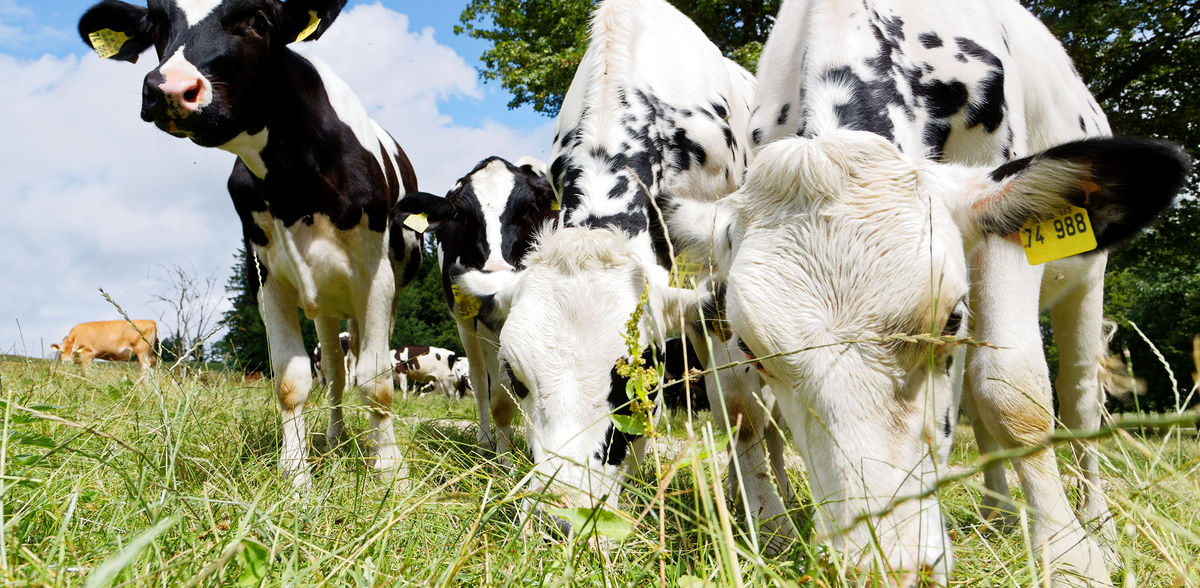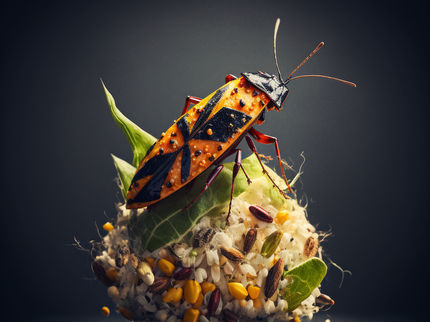Organic dairy farming: solutions to the calf problem
Study by the University of Hohenheim: Knowledge of the link between milk and the birth of calves is poorly developed in the population
Advertisement
According to the University of Hohenheim in Stuttgart, knowledge transfer, demand promotion and political support are just some of the approaches to solving the so-called calf problem. This is because the increasing production of organic milk means that more and more organic calves are being born. A connection that many people are not even aware of, according to a study by the university. Even less well known, however, is the fact that there is virtually no market for these organic calves. As a result, most of the animals are sold to conventional farms. Together with the Nürtingen-Geislingen University of Applied Sciences (HfWU), Hohenheim researchers have developed solutions to this calf problem in the "WertKalb" project.
The increase in milk production means that more and more calves are being born. This is because cows have to give birth to a calf once a year in order to produce milk continuously. "These calves are not valued either ethically or economically," regrets Prof. Dr. Mizeck Chagunda from the Department of Animal Husbandry and Breeding in the Tropics and Subtropics at the University of Hohenheim.
Male calves in particular, but also surplus female calves that are not needed to maintain the stock of dairy cows, are sold at the age of a few weeks and transported to northern Germany or abroad to be fattened there. This is particularly true for organic dairy farms: currently, more than 22,000 surplus calves are born on organic farms in Baden-Württemberg every year.
For the animals, this not only means long journeys, but they usually also leave the regional organic value chain, as they are usually sold to conventional fattening farms. This is an unsatisfactory situation both for organic farmers and for people who buy organic products.
Searching for solutions: Everyone must pull together
According to the researchers' findings, the main cause is the specialization of dairy farms: "It has led to a decoupling of the huge dairy market and the comparatively tiny meat market: The demand for organic milk is disproportionately higher than for organic veal and beef," explains Josephine Gresham, coordinator of the project "Innovative strategies for ethical value creation of calves from organic dairy farming", or "WertKalb" for short.
But how can this problem be solved? Together with organic farmers, organic associations, producer and marketing associations and individual experts, researchers from the University of Hohenheim and HfWU developed strategies along the entire dairy farming value chain - from animal breeding to animal husbandry and marketing.
"A project like this can only succeed if everyone pulls together and is willing to work constructively," emphasizes project manager Prof. Dr. Chagunda. A total of 21 companies and organizations took part in the joint project. The focus was on the organic model regions of Ravensburg, Biberach, Hohenlohe and Freiburg.
Catalog of measures
The researchers developed a whole catalog of measures. Starting with ways to avoid producing so many calves in the first place: "If the time between births were increased by just three months on around 13 percent of farms in Baden-Württemberg, around seven percent fewer calves would be born without significantly reducing milk yield," says Josephine Gresham. This could be increased even further: "It could even be 14 percent less if the time was increased by six months."
This is followed by approaches to make fattening more interesting. These could include dual-purpose breeds that produce both milk and meat, but also so-called commercial or cross-breeds, in which the calves gain weight faster and have a better meat quality. Stress-free slaughter on the farm of origin also improves meat quality. To the list of measures: https://oekolandbauforschung-bw.uni-hohenheim.de/wertkalb_hintergrund
Each farm must find its own way - policy makers are called upon
"However, there cannot be one strategy for all farms, but each farm must develop a strategy that suits it individually," summarizes Josephine Gresham. "Politicians are also called upon to set sensible framework conditions that farmers can comply with and that leave room for the individual circumstances of the farm in question."
Issue largely unknown to the public
However, consumers are a crucial point in all measures: Only if they buy and consume the meat can the rearing of the calves and further investments be worthwhile for the farmers. According to the researchers' findings, information and educational work are an important key to this.
An online survey of 918 participants, representative of southern Germany, produced some surprising results: Although 63 percent of respondents knew that cows and calves are often separated immediately after birth and that young calves are often transported long distances,
However, labels such as "Time for two - for cow + calf", which are awarded to products where the calves spend the first few months of their lives with their mother, are largely unknown. Other practices, the problem of the low market value of surplus organic dairy calves and the low demand for organic beef were also only known to six percent of participants.
"Many people do not seem to be aware of the connection between milk and beef or veal," says study author Mareike Herrler from the Department of Applied Nutritional Psychology at the University of Hohenheim. "However, they may also suppress this fact in order to avoid feelings of guilt when buying dairy products."
Animal welfare important - taste and money even more important
Most people care about the welfare of dairy calves and feel compassion for these animals. Animal welfare is one of the most important motives for buying organic food: "People who are aware of the problems in animal husbandry are particularly likely to buy organic milk and dairy products - possibly in the belief that they are making a contribution to animal welfare," says Mareike Herrler.
"In reality, however, the taste of the products is even more important to people and they need to be able to afford the usually more expensive products," says the expert, summarizing another result of her study. For example, respondents with a higher net household income were more likely to consume organic food overall as well as organic milk and dairy products.
Communicating knowledge - promoting demand
Targeted information about the issues and possible solutions promotes the willingness to buy ethically produced dairy and meat products: "People are certainly willing to do their bit for animal welfare. But they need incentives and the right form of information," explains Prof. Dr. Nanette Ströbele-Benschop from the Department of Applied Nutritional Psychology.
For example, when it comes to veal, customers primarily expect white, tender meat. However, high-quality meat from calves reared in accordance with current animal welfare standards is clearly red in color. "It is important to point out that red veal is actually a sign of quality," says Prof. Dr. Chagunda, "because it contains more unsaturated fatty acids and has a more valuable protein structure than white meat."
The researchers see a good starting point for increasing the demand for organic veal in company catering, such as in canteens and cafeterias. This offers the opportunity to try dishes made from organic veal that have already been processed and to obtain information at the same time. In a pilot test, the offer was well received and the canteen management wants to continue to give preference to organic products in the future. "Nevertheless, it is important that the meat can also be found in the supermarket around the corner," emphasizes Mareike Herrler.increased organic consumption.
Note: This article has been translated using a computer system without human intervention. LUMITOS offers these automatic translations to present a wider range of current news. Since this article has been translated with automatic translation, it is possible that it contains errors in vocabulary, syntax or grammar. The original article in German can be found here.




























































